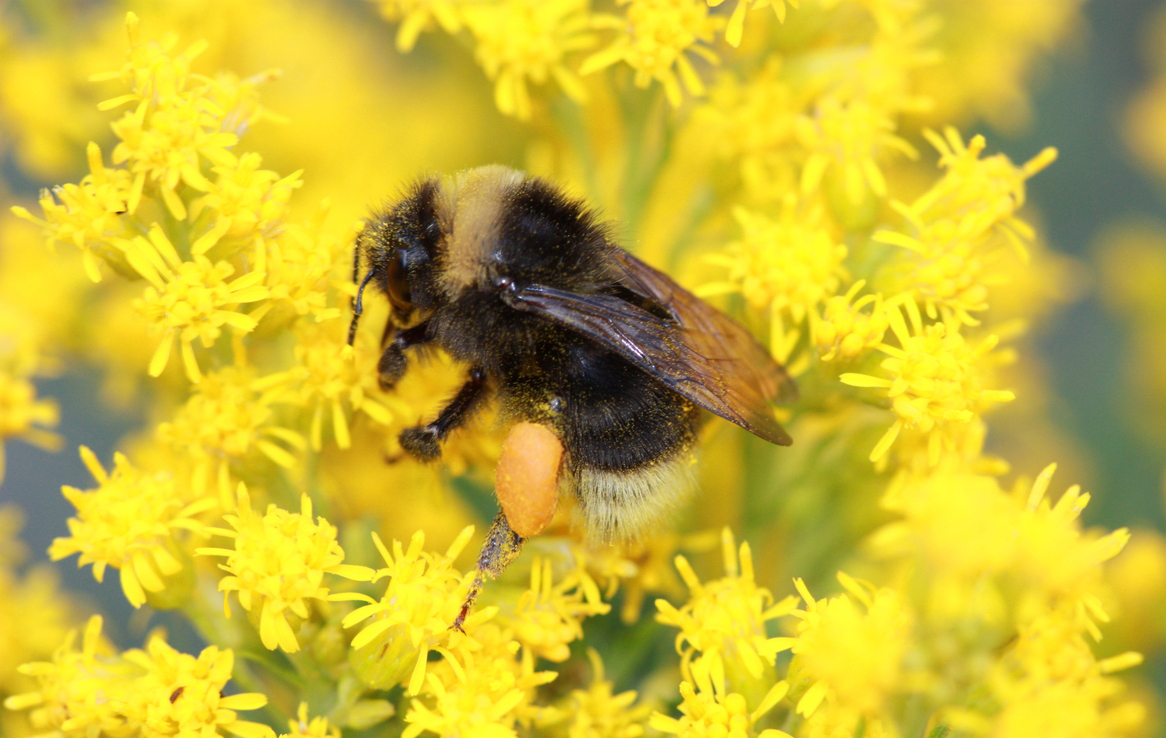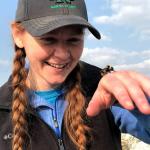Everyone is welcome to join researchers in this effort to collect data and support bumble bee conservation.
At this point in the season, it’s likely many people have encountered bumble bees jostling about on flowers. These charismatic bees are easily recognizable thanks to their large size, beautifully loud buzz, and distinctive color patterns of black and yellow (sometimes orange!). Bumble bees play an important role in sustaining the health of our environment by pollinating flowers in natural and urban areas, and by contributing to successful harvests.

Nebraska is home to about twenty different bumble bees and includes a mix of species found in both the eastern and western United States. However, many of our bumble bees face an uncertain future. Nebraska Game and Parks has identified four of the state’s bumble bees as Species of Greatest Conservation Need: the western bumble bee (Bombus occidentalis), southern plains bumble bee (Bombus fraternus), Suckley cuckoo bumble bee (Bombus suckleyi), and variable cuckoo bumble bee (Bombus variabilis).
The obstacles facing bumble bees are not restricted to this state. A recent study led by the IUCN Bumble Bee Specialist Group—supported by studies led by Dr. Sydney Cameron—and a status review by Dr. Robbin Thorp and the Xerces Society all demonstrate that a quarter of North America’s nearly fifty species of bumble bees are experiencing dramatic population declines.

The causes of these declines are not fully understood, but the following are likely playing a role: loss or fragmentation of habitat, pesticide use, overgrazing, climate change, low genetic diversity, and the introduction and distribution of pathogens through commercial pollinators. Regardless of the ultimate cause of bumble bee declines, protecting existing habitat and creating and maintaining new habitat are some of the most immediate and productive steps that we can take to conserve these important pollinators. This will require widespread participation and collaboration by landowners, agencies, and scientists.
To help further our understanding of, and conservation efforts for, bumble bees, the Xerces Society has launched the Nebraska Bumble Bee Atlas. This community science project offers locals the opportunity to work alongside researchers to collect data that will shed light on the distribution, status, and habitat needs of Nebraska’s bumble bees.
In addition to identifying areas of habitat to protect, the Nebraska Bumble Bee Atlas will help us to understand how bumble bee distributions have changed over time. Nebraska is in a unique position to do this because the state has been documenting bumble bee distribution data since the 1960s. This historical data will also allow us to assess the effects of land use change on bumble bee populations. Nebraska is a prime location to study this question as it has a diversity of ecosystems: the sandhills, tall and shortgrass prairies, wetlands and woodlands. While some of each of these habitats are still intact, many landscapes have undergone dramatic land use changes over the past 150 years, with once-productive bumble bee habitat converted to intensive corn and soybean production.
All of this information—more detailed habitat associations, data about currently occupied (as well as unoccupied) habitat, and knowledge about potential shifts in range—will help conservation biologists and restoration practitioners better support healthy bumble bee populations and generate recommendations for areas that may be experiencing pollinator declines.
The University of Nebraska–Lincoln has partnered with the Xerces Society to help gather this knowledge to address the needs of our native bumble bees. However, because Nebraska is a large and diverse state, professional scientists will have a limited reach. With your help, we can not only assemble a large number of volunteers, but also quickly cover the entire state, collect quality scientific data, and contribute to bumble bee conservation. Are you in?
How to Get Involved with Nebraska Bumble Bee Atlas:
- Attend a training event or otherwise familiarize yourself with the project protocols.
- Adopt a grid cell. You can do this alone, or with a group of friends or family.
- Visit a location within that grid cell two times during the bumble bee season and use one of our standardized protocols to sample for bumble bees.
- Submit your data to Bumble Bee Watch online, or using our mobile app (available for both iOS and Android).
Thank you for taking part in this exciting new project!
Further Reading
Read our press release announcing the Nebraska Bumble Bee Atlas.
Check out the Nebraska Bumble Bee Atlas website.
Learn more about the Xerces Society’s Endangered Species Conservation Program.
Check out the rest of our Pollinator Week content here!




